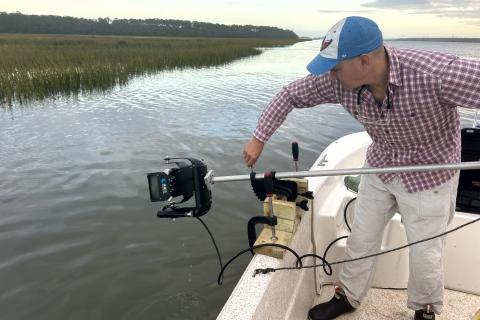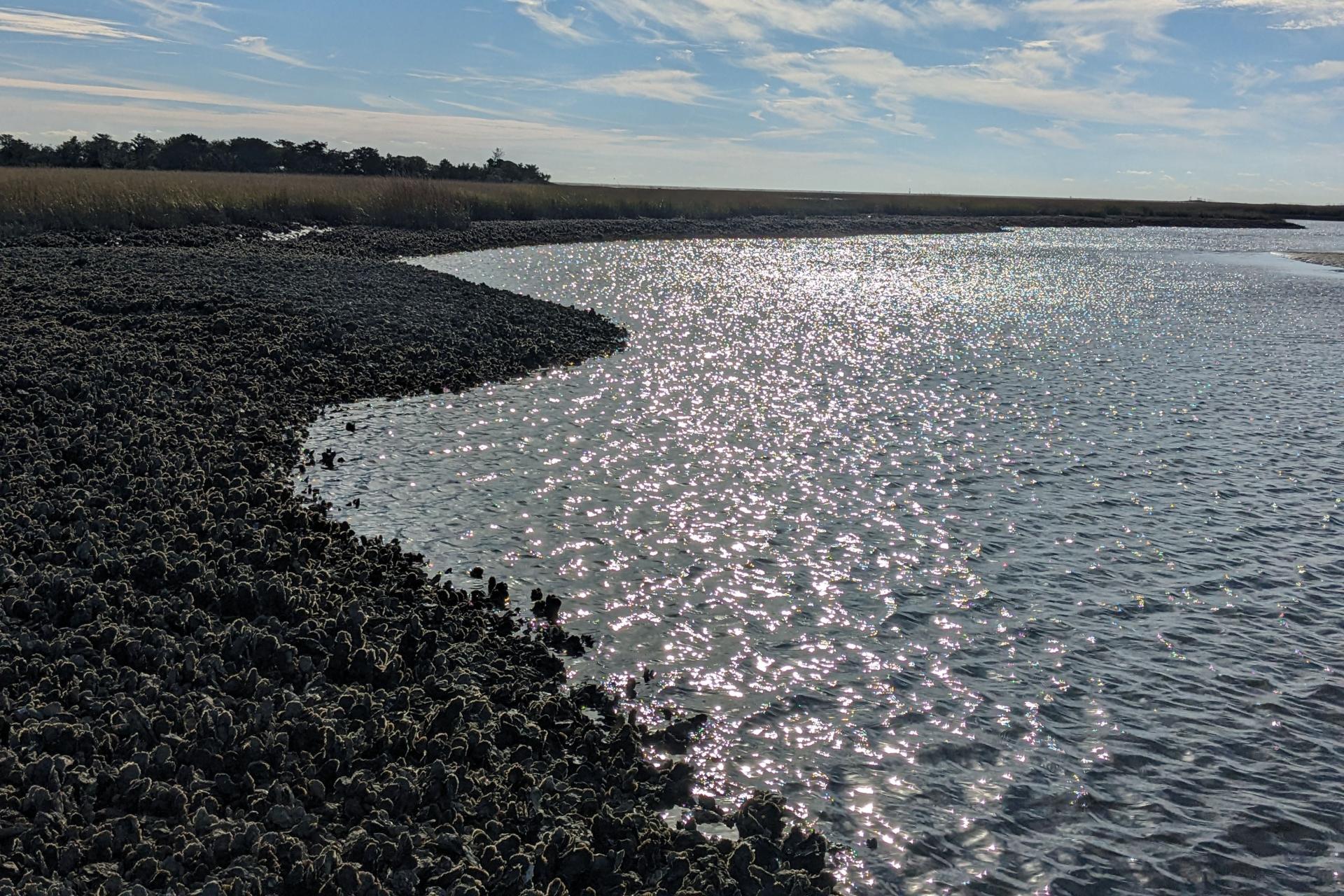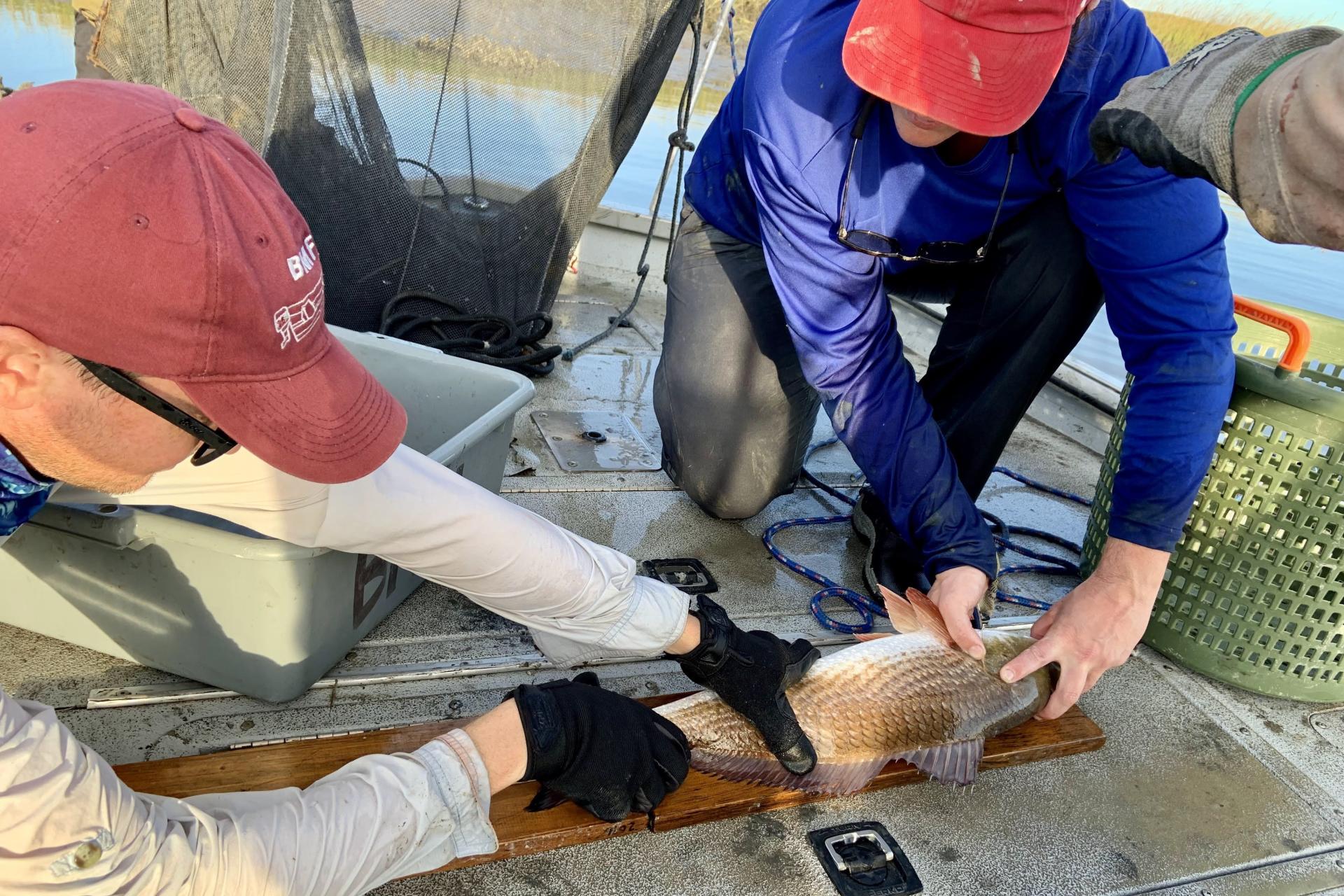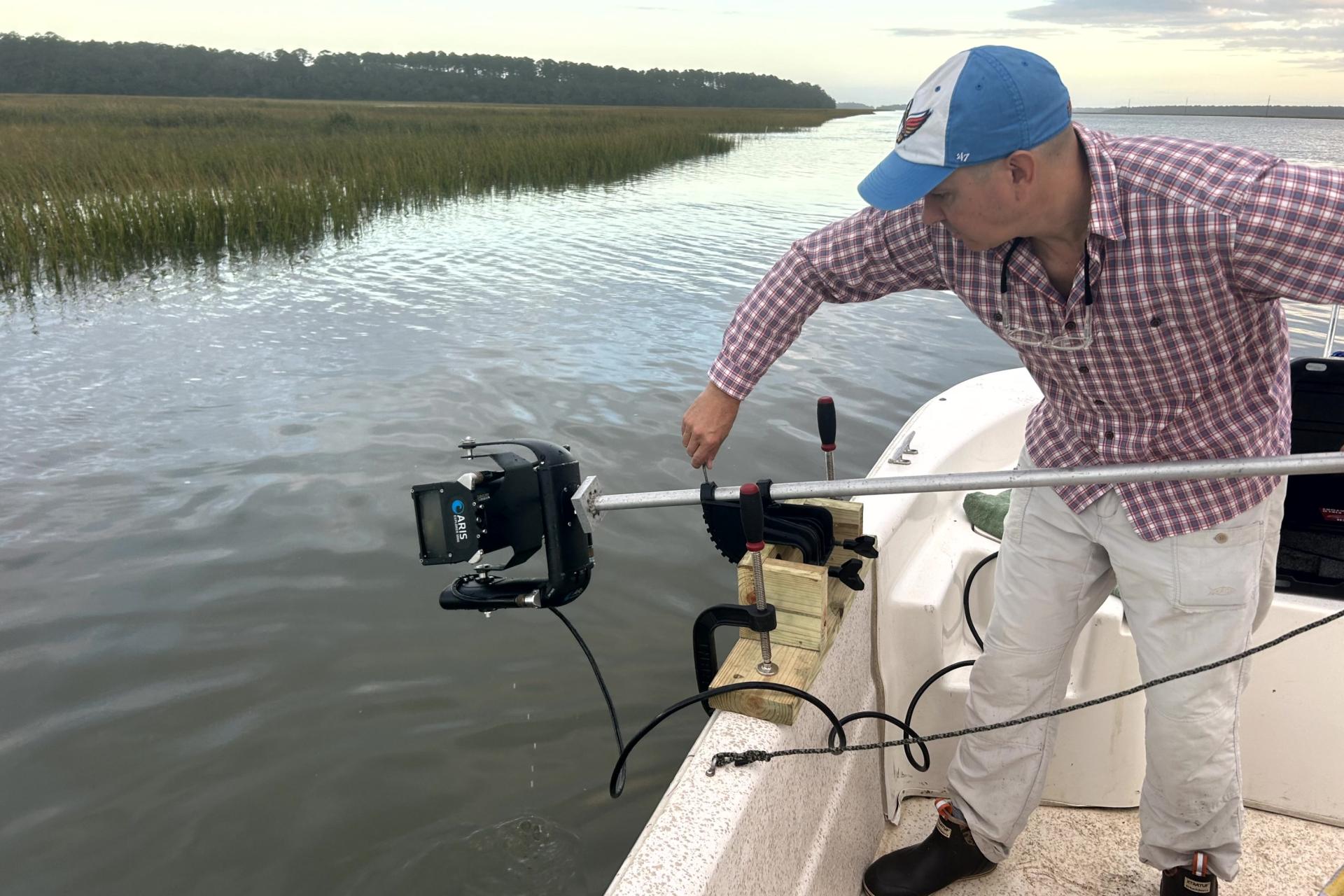
By assessing oyster reefs in four reserves from North Carolina to Florida, this project will evaluate oyster reef condition and function to support management efforts and compare emerging and traditional monitoring methods.
Oyster reefs provide habitat for a diverse and productive community of organisms within estuaries, yet have declined drastically due to overfishing and disease outbreaks. With increased conservation and restoration efforts to increase oyster reef quantity, there is a need for a more holistic understanding of oyster reef condition and function for reef-associated fauna. However, it has been difficult to assess oyster reef condition and ecosystem benefits in both individual Reserves and across the System, as there is no standardized monitoring of oyster habitats in place. Traditional techniques to quantify the value of oyster reefs as habitat are labor intensive and difficult to replicate at multiple sites, limiting the ecological information they can provide, especially at large scales.
This project examines estuarine fauna use of oyster reefs in four reserves from North Carolina to Florida using emerging methods that will each provide unique ecological information: High-Resolution Acoustic Imaging, Stable Isotope Analysis, eDNA Metabarcoding, and Oyster Disease Assays. These methods will be applied alongside traditional sampling to compare their utility in evaluating oyster reef habitat function and assess their capacity to address reserve management needs associated with oysters. The team will host two workshops to generate targeted research questions to be addressed and create a collaborative research framework to build capacity to respond to future funding opportunities focused on this key estuarine ecosystem engineer. The work will also begin to develop a set of best-practice oyster reef monitoring techniques for use within the Reserve System. Beyond NERR users, the project engages resource managers to evaluate the potential for data produced by these ecological evaluation methods to feed directly into management of coastal habitats and fishery resources.
Project lead Matthew Kimball gives a short introduction to "Evaluating oyster reefs as habitat: Comparing the utility of ecological metrics to assess ecosystem function."



